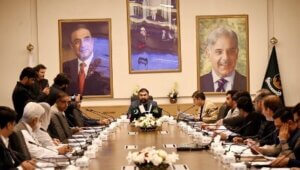Balochistan Schools, Implementation of SOPs
Editorial :
Educational institutions across Balochistan reopened on Tuesday (Sept 15) like in other parts of the country. In the first phase, universities, colleges, and higher secondary sections of government-run schools opened after a break of eight months. The Balochistan government had closed educational institutions in March 2020 in the aftermath of the global outbreak of coronavirus.
On the first day of the reopening of schools, students were wearing masks and adopting social-distancing in Quetta, the provincial capital. Balochistan Education Minister, Sardar Yar Muhammad Rind, UNICEF, and education officials participated in the inaugural ceremony at Sandeman high school.
The school in the heart of Quetta city almost met almost all World Health Organization (WHO) standards, when it comes to social-distancing, wearing masks, and adopting Standard Operating Procedures (SOPs).
However, government-run schools and colleges both for male and female paint a grim picture in rural Balochistan. Secretary education, Sher Khan Bazai told this newspaper that currently 8,188 primary, middle, and high schools had no toilet facility. During the interview, he revealed that over 11,000 schools have no drinking water, 7,998 have no boundary walls, 1,942 have no buildings, 12,258 schools have no electricity facilities.
The number of government-run primary, middle and high schools for girls and boys is 14,979 in the province. Now the question arises, how SOPs can be applied in such schools lacking basic infrastructure. Perhaps, the department or the provincial government has no answer.
How can students wash their hands, when there is no water facility and toilet inside schools? The virus can spread fast if revolutionary measures were not adopted to provide basic facilities especially drinking water and construction of toilets in government-run schools.
The overall literacy rate in general and the female literacy rate, in particular, is extremely poor in Balochistan as compared to other parts of the country. Most of the girls abandon their education as a result of a lack of basic facilities in schools in Balochistan.
Education the biggest employer
Balochistan government has allocated the second-highest budget for the education sector after development. During the financial year 2020-21, the province allocated Rs. 75 bs for secondary and higher education. The department is the largest public sector employer with over 75,000 teaching and non-teaching staff in Balochistan.
To be precise, implementing SOPs in schools lacking basic facilities seems to be mere lip service. The issues of students in far-flung areas of Balochistan need to be addressed and they should be given equal opportunities for studies. Action needs to follow words.






